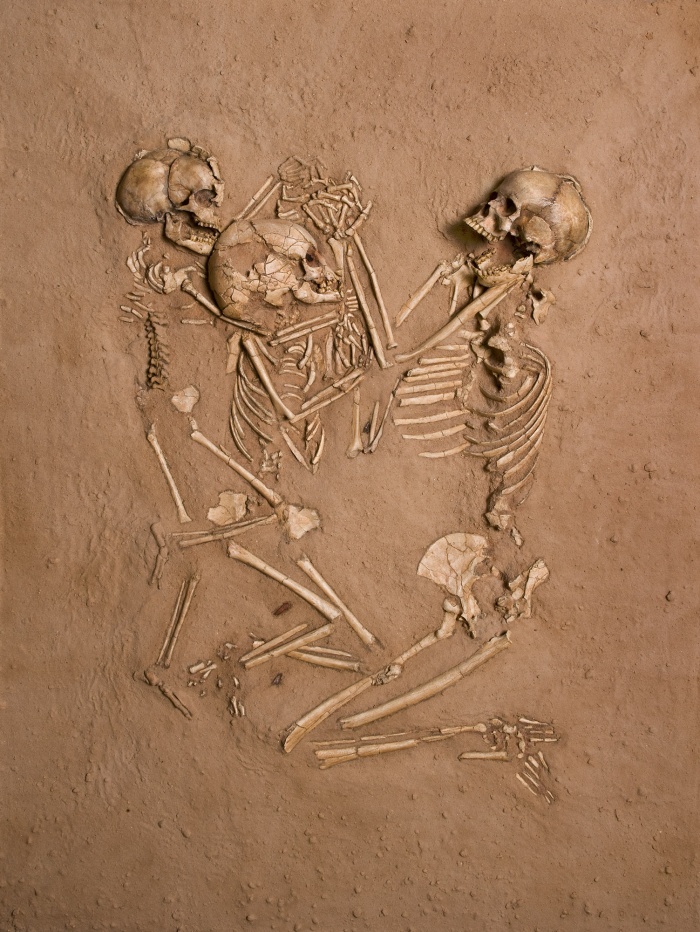Displaying image 56 of 65 images in Archaeology.
Triple Burial at Gobero
Mike Hettwer ©2008 National Geographic
Figure Caption: The skeletons and artifacts of the exceptional triple burial at Gobero are preserved in this cast exactly as found by Paul Sereno, Explorer-in-Residence at the National Geographic Society. Pollen clusters found underneath the skeletons indicate the bodies had been laid atop flowers, and the burial also contained four arrowheads. The people died without any sign of skeletal injury.
The final substantial human occupation of Gobero is called the Tenerean occupation. Humid conditions returned to the region, and the lake refilled. Radiocarbon and OSL dates indicate that Gobero was occupied between about 5200 and 2500 BC.
Burials in the Tenerean occupation are more varied than in the Kiffian period, with some tightly bound burials, some recumbent, and some, like this multiple burial of a woman and two children, intertwined with others. Physical analysis of the skeletal material make it clear that this is a different population from the earlier Kiffians, although some of the artifacts are similar.
The Tenerean people at Gobero were probably partly semi-sedentary hunter-gatherer-fishers, with some amount of cattle herding. Pottery with stamped impressions, projectile points with deep basal notches, bracelets and pendants of hippo ivory, and pendants made of a fine-grained greenstone were discovered in association with Tenerean burials. Animal bones found include hippos, antelope, softshell turtles, crocodiles and a few domestic cattle. Pollen studies suggest that Gobero was a mosaic of shrubland and grasslands, with some tropical trees.
After the end of the Tenerean period, Gobero was abandoned, except for some transient presence of nomadic cattle herders; the final desertification of the Sahara had started and Gobero could no longer support long-term habitation.
Source: National Geographic



 Searching...
Searching...

 Previous
Previous
 Next
Next